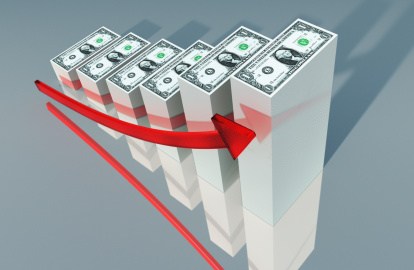Using the Power of Certainty to Drive Sales Success

When it comes to selling, nothing is more important than the power of certainty. After all, when potential customers or clients are uncertain, they hesitate. They don’t want to move forward, say “yes,” or allow you to close the sale. The more uncertainty you have, the higher the risk for the person making the purchase and the more likely it is they will decide to wait.
On the other hand, when there is a high level of certainty and the product or service will help the customer accomplish what they want to achieve or give them the result they desire now and in the future, the sale can very easily be made.
So in a world of amazing uncertainty, you have to ask yourself, “What am I certain about?” One of the top certainties of today is that the future is all about relationships. Even though we live in a highly technical world, it is still a human world where people buy and sell on logic and emotion, on their view of the future, and on the level of trust they have in the people they’re working with. Therefore, no matter what you’re selling, if you don’t have trust it will be difficult to rapidly increase sustainable sales.
The fact is that it has been increasingly difficult for order-takers to make a living in today’s networked, mobile, social, and interactive economy. The salespeople who do best are those who act not as order-takers, but as trusted advisors. This is true whether you’re selling flat-panel display televisions at an electronics store, multi-million-dollar ERP systems, or real estate. Becoming the trusted advisor is key.
For example, if you go to a hardware store and ask someone to help you find something, and that salesperson simply points you to the correct aisle, he or she may make the sale, but not a loyal customer. However, when that salesperson takes an interest in what you’re looking for, asks questions about how you plan to use the item, and then helps you find what you are looking for or a better solution, you’re more likely to go back to that hardware store and seek that person out. In fact, you’re no longer just going to the hardware store; you’re going to see your trusted advisor who works at the hardware store.
Now the main questions are: “As a salesperson, how do you really reach that trusted advisor status?” And, “Once you attain that status, how do you use certainty to fill your sales pipeline?” Here are three keys to keep in mind.
Many salespeople lower the level of trust they have with customers, not because they aren’t trustworthy people, but because they aren’t thinking about trust before they do their sales pitch. Therefore, when you’re talking with a prospect or customer, you always want to ask yourself, “Where is the current trust level?” Perhaps there isn’t any. If so, that’s okay. Work at building trust as the conversation and resulting relationship progresses.
For example, instead of saying something negative about a competing product, pull out your smart phone or tablet and show the customer tweeted complaints about the competing product, as well as tweets about your product. This will give the customer social proof that you are telling the truth.
Raise the bar on trust whenever possible. Change how you talk about your product or service, how you sell it, or how you demo it so that trust stays where it is or, better yet, goes higher. When you can raise the bar on trust, you’re much closer to that sale because now you’re a trusted advisor.
Rather than strive for sales or transactions, strive for relationships that span time, price fluctuations, and the competition. Sometimes that means sending customers to your competitors. Yes, it sounds contrary to the traditional sales building advice, but it’s a sure way to build your trusted advisor status.
For example, if a competing product to yours would better suit a customer, tell them about it. Give them the other company’s web site, phone number, or address. Write it down for them. Even though you didn’t make this sale, you just made many future sales because you are now definitely a trusted advisor.
In my own 30 years of research and in starting numerous successful companies, I’ve found that the best way to gain trust is to make recommendations in the customer’s best interest, even if that means sending them to a competitor. Why? Because now the customer realizes you truly want to help and that they can trust you for the right answers. Then, when they have another need or challenge (which they most certainly will), they’ll turn to you to help them. When you’re always the first company they contact, you’re bound to get long-term sales.
Remember, transactions are here today and gone tomorrow. That’s why your goal is to gain customers who are with you forever. After all, it’s much less expensive to sell to current customers who already trust you than to try to gain a new customer. Invest the time upfront and you’ll have better results in the future.
Once you have people’s trust and understand the power of leveraging relationships, it’s time to ask yourself a key question we touched on earlier: “What am I certain about?” Chances are, you’re certain about a lot of things. For example, you know when major holidays will hit, when seasons will come, and even your industry’s sales cycles. Another example of certainty is that the number of customers using smart phones to help them make purchasing decisions while in a store will increase. And if you’re really building relationships and trust with your customers, you’ll also be certain about their needs, both now and in the future. So it’s time to make a list of certainties and put those certainties to work.
Let’s take the sales cycle as an example. Most industries have sales cycles where there’s a certain time that people buy the product or service. Rather than prospect, market, and sell during the sales cycle, if you know it’s coming, why not prospect, market, and sell before the sales cycle starts? Why? Because one of the strategies I teach in my book Flash Foresight is that opposites work better. So rather than compete and sell when everyone else is competing and selling, why not sell when your competitors don’t think the sales cycle has started?
Before the sales day begins, always ask yourself: What are the problems that are most likely on my customer’s minds? What are the uncertainties that might keep them from saying yes? Then ask yourself: What am I certain about? The key is to use the things you’re certain about to make saying “yes” easier for your customers. Eliminate the risk of saying yes and put more risk on saying no. If you’re a trusted advisor and talking to your customers about the certainties you know they’ll be facing, they will listen and buy.
Fill Your Sales Pipeline
We live in a highly competitive and uncertain world. And that can force many salespeople to forget about relationship building and focus on the current transaction. Yet when you focus on developing personal relationships with customers, becoming a trusted advisor rather than a salesperson, and using the power of certainty to your advantage, you will provide the comfort and clarity for customers to make a buying decision now.
ABOUT DANIEL BURRUS
Daniel Burrus is considered one of the world’s leading technology forecasters and business strategists, and is the founder and CEO of Burrus Research, a research and consulting firm that monitors global advancements in technology driven trends to help clients understand how technological, social and business forces are converging to create enormous untapped opportunities. He is the author of Flash Foresight (CLICK HERE to get your copy now).





